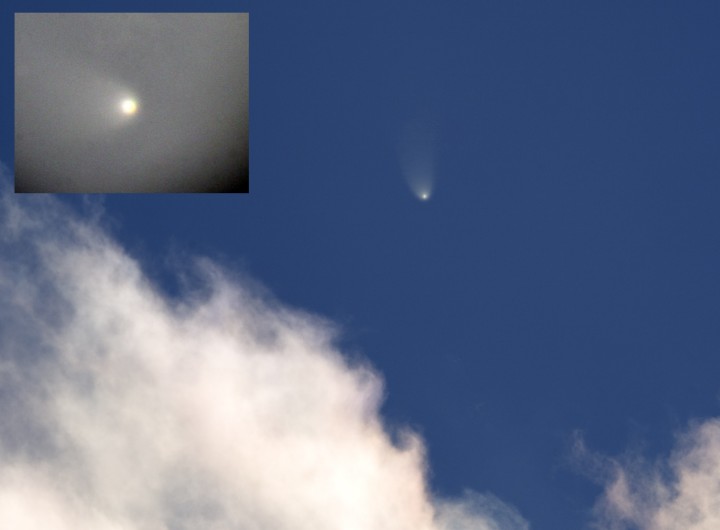Credit & Copyright: Stefan
Seip - Inset: David Levy
Explanation:
Comets grow bright when they're close to the Sun,
basking in the intense solar radiation.
Of course, they're also usually impossible to
see against
the overwhelming scattered sunlight.
But surprising Comet McNaught - whose January 12 closest approach to
the Sun (perihelion passage) was well inside
the orbit
of Mercury - gave an enjoyable performance in
bright blue daytime skies.
In fact, comet expert David Levy captured this remarkable
inset (upper left) telescopic view of McNaught within an hour of
perihelion, with the comet in
broad daylight only about 7 degrees
away from the
Sun's position.
Stefan Seip's
wider daytime view of the comet and fluffy clouds
was recorded approximately a day later.
Seip used a polarizing filter and a telescope/camera set up
near Stuttgart, Germany.
No longer visible in broad daylight,
Comet McNaught
is now touring twilight
southern skies.
1999 2000 2001 2002 2003 2004 2005 2006 2007 2008 2009 2010 2011 2012 2013 2014 2015 2016 2017 2018 2019 2020 2021 2022 2023 2024 2025 |
Январь Февраль Март Апрель Май Июнь Июль Август Сентябрь Октябрь Ноябрь Декабрь |
NASA Web Site Statements, Warnings, and Disclaimers
NASA Official: Jay Norris. Specific rights apply.
A service of: LHEA at NASA / GSFC
& Michigan Tech. U.
|
Публикации с ключевыми словами:
Comet McNaught - Комета МакНота
Публикации со словами: Comet McNaught - Комета МакНота | |
См. также:
Все публикации на ту же тему >> | |
